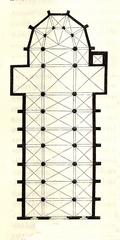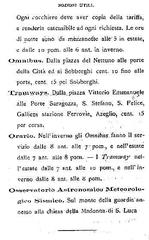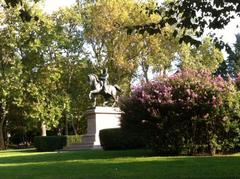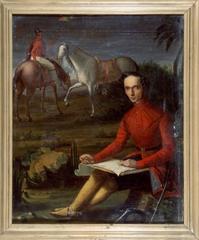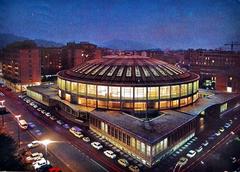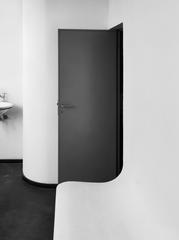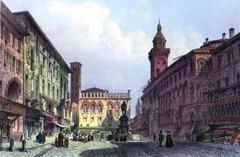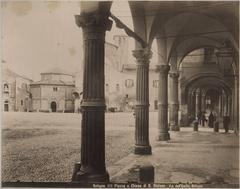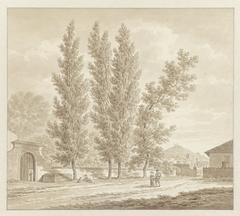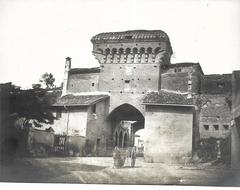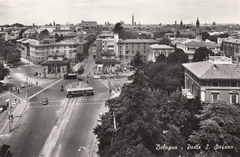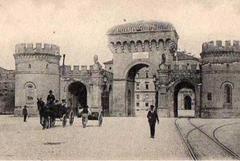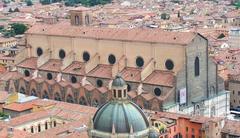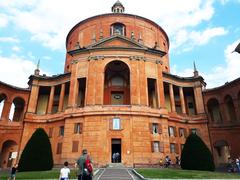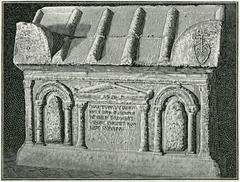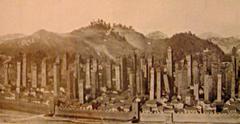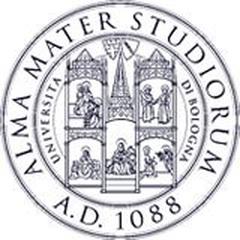
Comprehensive Guide to Visiting Bologna, Metropolitan City of Bologna, Italy
Date: 13/08/2024
Captivating Introduction
Welcome to Bologna, where history, culture, and culinary delights form a tantalizing trifecta that enchants every visitor. Imagine a city where you can stroll through ancient Etruscan settlements, marvel at medieval towers, and indulge in rich Italian cuisine—all within a few square kilometers. Bologna, the capital of Italy’s Emilia-Romagna region, is a city that defies time, blending its 2,500-year history with a vibrant contemporary lifestyle (Wikipedia).
From the Etruscans who first settled here in 534 BCE to the Romans who transformed it into Bononia, and the medieval scholars who established the world’s oldest university in 1088, Bologna has been a significant cultural and intellectual hub for centuries (Italy This Way). Picture yourself wandering through the porticoes, now a UNESCO World Heritage Site, that stretch over 38 kilometers, providing shelter and enhancing the city’s architectural beauty (Wikipedia).
Bologna is not just about its illustrious past. It celebrates life with a myriad of cultural events and festivals. Whether it’s the prestigious Arte Fiera during Art Week, the cinematic treasures of Cinema Ritrovato, or the historic car race of 1000 Miglia, Bologna offers something for everyone (Bologna Welcome). Let’s not forget its culinary legacy—earning the nickname ‘La Grassa’ (The Fat) for its rich food traditions, Bologna is a gastronomic paradise waiting to be explored (Wikipedia).
So, pack your bags, bring your appetite, and get ready to uncover the secrets and stories of this timeless city. And don’t forget to download Audiala to unlock even more hidden gems and expert insights as you navigate through Bologna’s rich cultural landscape.
Table of Contents
- Historical Overview
- Cultural Events and Festivals in Bologna
- Art Week
- Porticoes Festival
- Cinema Ritrovato
- 1000 Miglia
- Cosmoprof
- Ferragosto
- Fiera del Ravone
- Infiorata di Santo Stefano
- Fieracavalli
- Estate Romagnola
- Fiera Internazionale del Riso
- Concerts and Performances
- Historical and Cultural Tributes
- Modena Street Festival
- Carnevale di Bologna
- Tour de France
- Visitor Tips
Historical Overview of Bologna
Imagine the Journey Back in Time
Imagine a city where the past and present intertwine seamlessly, where you can trace the footsteps of Etruscan settlers and dine in the shadows of medieval towers. Welcome to Bologna, the heart of Italy’s rich history and culture.
Ancient Origins and Etruscan Era
Bologna’s history stretches back over 2,500 years, beginning with its establishment by the Etruscans around 534 BCE. Known as Felsina, the city was a significant Etruscan settlement, strategically located in the fertile Po Valley. The Etruscans were known for their advanced urban planning and engineering, which laid the groundwork for Bologna’s future development (Wikipedia).
Roman Period
In 189 BCE, the Romans conquered Felsina, renaming it Bononia. Under Roman rule, the city flourished as a vital hub in the Roman road network, connecting it to other major cities like Milan and Rome. The Roman influence is still evident today, with many of Bologna’s streets following the original Roman layout. The city’s infrastructure, including aqueducts, roads, and public buildings, was significantly developed during this period (Italy This Way).
Medieval Resurgence
Following the fall of the Roman Empire, Bologna experienced a period of decline. However, it regained prominence in the 11th century, particularly with the establishment of the University of Bologna in 1088. This institution is recognized as the oldest university in continuous operation in the world, marking Bologna as a center of learning and intellectual activity (Wikipedia).
During the medieval period, Bologna was also known for its numerous towers, built by wealthy families as symbols of power and prestige. At its peak, the city had over 180 towers, of which fewer than 20 remain today. The Two Towers, Asinelli and Garisenda, are the most famous and serve as iconic landmarks (Italy This Way).
Renaissance and Baroque Periods
The 15th and 16th centuries were marked by significant architectural and cultural developments. Bologna became part of the Papal States in 1506, which brought stability and prosperity. The city saw the construction of many of its grand palaces, churches, and public buildings during this time. Notable structures include the Basilica of San Petronio, one of the largest churches in the world, and the Palazzo dell’Archiginnasio, which housed the university’s main library and anatomical theatre (Italy This Way).
Modern Era and World War II
Bologna continued to thrive into the modern era, becoming an important agricultural, industrial, and financial hub. However, the city suffered substantial damage during World War II due to Allied bombings. Despite this, Bologna managed to preserve much of its medieval and Renaissance architecture, thanks to extensive post-war restoration efforts (Wikipedia).
Post-War Reconstruction and Cultural Renaissance
After World War II, Bologna underwent significant reconstruction and modernization. The city embraced its historical heritage while also fostering a vibrant cultural scene. In 2000, Bologna was declared the European Capital of Culture, and in 2006, it was designated a UNESCO City of Music. These recognitions highlighted Bologna’s rich cultural and artistic contributions to Europe and the world (Wikipedia).
UNESCO World Heritage Site
In 2021, Bologna’s porticoes were recognized as a UNESCO World Heritage Site. These covered walkways, stretching over 38 kilometers, are unique architectural features that provide shelter from the elements and enhance the city’s aesthetic appeal. The porticoes are integral to Bologna’s identity, reflecting its historical and social evolution (Wikipedia).
Contemporary Bologna
Today, Bologna is a bustling metropolis with a population of over 400,000 residents and a metropolitan area home to more than 1,000,000 people. It remains a significant educational and cultural center, with the University of Bologna continuing to attract students from around the globe. The city is also known for its culinary excellence, earning the nickname ‘La Grassa’ (The Fat) due to its rich food traditions (Wikipedia).
Bologna’s commitment to sustainability and urban development is evident in its recent initiatives. The city aims to become carbon neutral by 2040 and has integrated gender perspectives into urban planning, focusing on sustainable mobility, public infrastructure, and green spaces (Wikipedia).
Key Historical Sites
- Piazza Maggiore: The central square of Bologna, surrounded by significant historical buildings such as the Basilica di San Petronio and the Palazzo dei Notai. It serves as a focal point for public life and events (PlanetWare).
- The Two Towers: Asinelli and Garisenda, the most prominent of Bologna’s medieval towers, offering panoramic views of the city (Italy This Way).
- Basilica di San Petronio: One of the largest churches in the world, known for its unfinished facade and impressive interior (Italy This Way).
- Palazzo dell’Archiginnasio: The former main building of the University of Bologna, featuring a remarkable anatomical theatre and a historic library (Italy This Way).
- Santo Stefano: A complex of seven interconnected churches, known as the ‘Seven Churches,’ built on the site of a Roman temple (Italy This Way).
Bologna – where the pasta is plump, the towers are tipsy, and the history is as rich as the ragù. From its ancient Etruscan roots to its modern-day cultural renaissance, Bologna offers a unique and memorable experience for all who visit. So, pack your bags, bring your appetite, and explore the secrets of this timeless city. And don’t forget to download Audiala to unlock even more stories and hidden gems.
Cultural Events and Festivals in Bologna
Welcome to Bologna: A Cultural Treasure Hunt Awaits!
Imagine a city where art, history, and gastronomy blend into a rich tapestry of experiences waiting to be discovered. Welcome to Bologna, your next cultural adventure! Let’s dive into the heart of this vibrant city, where every corner holds a story, every event is a celebration, and every festival is a treasure waiting to be unearthed.
Art Week
Bologna’s Art Week, taking place in early February, is like finding the crown jewel in a treasure hunt. The highlight is the Arte Fiera, celebrating its 50th anniversary in 2024. Picture yourself wandering through Italy’s most prestigious contemporary art fair, surrounded by masterpieces and creative minds from around the world. Don’t miss Art City, an array of exhibitions spread across the city, enhancing your cultural expedition.
Porticoes Festival
In June (with a sneak peek in May), the Porticoes Festival celebrates Bologna’s UNESCO World Heritage porticoes. Imagine strolling through 62 kilometers of historic porticoes adorned with artistic installations, performances, and guided tours. It’s like walking through an open-air museum where every arch whispers tales of the past.
Cinema Ritrovato
From June 22 to June 30, 2024, immerse yourself in the Cinema Ritrovato, a paradise for cinephiles. Picture watching restored classic films under the stars in the iconic Piazza Maggiore, one of the world’s most beautiful open-air cinemas. The festival’s retrospectives and rare screenings are cinematic treasures waiting to be discovered.
1000 Miglia
Mark your calendar for June 14, 2024, when the iconic 1000 Miglia historic car race roars through Bologna. Imagine the excitement of watching classic cars zoom through picturesque routes, celebrating Italy’s rich racing history.
Cosmoprof
From March 21 to March 24, 2024, the Cosmoprof at BolognaFiere showcases the latest trends in the beauty and cosmetics industry. It’s like stepping into a future beauty paradise where you can discover innovative products and technologies from around the globe.
Ferragosto
On August 15th, join the festive spirit of Ferragosto with a spectacular fireworks display at Piazza Maggiore. Imagine savoring traditional grilled meats and fresh fruits at local restaurants, making it a perfect holiday for both locals and tourists.
Fiera del Ravone
Held annually on the third Sunday of April, the Fiera del Ravone in Bologna’s medieval district is a treasure trove of local crafts, artisanal products, and street food. It’s a vivid glimpse into the city’s rich cultural heritage.
Infiorata di Santo Stefano
In early May, Piazza Santo Stefano transforms into a stunning tapestry of flower petals for the Infiorata di Santo Stefano. Imagine intricate floral designs that will leave you spellbound. It’s a visual feast that engages your senses.
Fieracavalli
Late June brings the Fieracavalli, an international horse fair at Bologna’s Exhibition Center. Picture yourself amidst the excitement of equestrian competitions and the beauty of horse breeds from around the world.
Estate Romagnola
From June to September, enjoy the Estate Romagnola, a festival featuring open-air concerts, art exhibitions, and food festivals. It’s a vibrant cultural experience that celebrates summer in Bologna.
Fiera Internazionale del Riso
In October, the Fiera Internazionale del Riso at the Bologna Fair District celebrates rice and its culinary uses. Imagine tasting different rice dishes and watching cooking demonstrations by renowned chefs. It’s a food lover’s paradise.
Concerts and Performances
Bologna’s cultural scene is set to shine in 2024 with a variety of concerts. Highlights include Max Pezzali on June 23, Zucchero on June 27, and Elio e Le Storie Tese on June 29. Imagine the thrill of live music resonating through the city.
Historical and Cultural Tributes
In 2024, Bologna pays homage to its rich cultural heritage with events like the 60th anniversary of painter Giorgio Morandi’s death and the birthday of beloved Bolognese singer-songwriter Lucio Dalla on March 4. Expect exhibitions and musical tributes that will touch your heart.
Modena Street Festival
Nearby Modena hosts the Modena Street Festival from June 21 to June 23, 2024. Imagine a vibrant festival with street food vendors, live music, and entertainment. It’s a culinary adventure worth a short trip from Bologna.
Carnevale di Bologna
In mid-February, Bologna’s Carnevale di Bologna brings masked balls, street parties, and colorful processions. Imagine being part of the lively and joyous celebration leading up to Shrove Tuesday.
Tour de France
In a unique twist for 2024, Bologna will be part of the Tour de France. Imagine the excitement of watching this prestigious cycling race pass through the city.
Visitor Tips
Planning to attend these events? Here are some insider tips:
- Book in Advance: Accommodations and tickets can sell out fast during major festivals.
- Bologna Welcome Card: A cost-effective way to explore the city’s attractions.
- Museum Hours: Most museums are closed on Mondays, and many churches shut over lunchtime for two to three hours.
- Day Trips: Bologna’s central location makes it an ideal base for day trips to Modena, Parma, and the Adriatic Coast.
Ready to dive into Bologna’s cultural treasure hunt? Download Audiala for expert insights and hidden gems that will make your visit unforgettable.
Call to Action
As you conclude your journey through Bologna, it’s evident that this city is a living museum where every corner whispers tales of the past while embracing the future with open arms. From its ancient Etruscan roots to its modern-day status as a cultural and educational hub, Bologna offers a unique blend of history, art, and gastronomy that captivates the soul (Wikipedia).
Imagine the thrill of exploring the Two Towers, Asinelli and Garisenda, or wandering through the Basilica di San Petronio, one of the largest churches in the world (Italy This Way). Picture yourself attending the vibrant festivals like Art Week or Cinema Ritrovato, each offering a treasure trove of experiences that enrich your understanding of Bologna’s cultural heritage (Bologna Welcome).
But Bologna is more than its landmarks and events. It’s in the little moments—the aroma of fresh pasta, the sound of street musicians under the porticoes, and the warmth of the locals—that you truly feel the essence of this city. Bologna’s commitment to sustainability and urban development ensures that it remains a city where tradition and innovation coexist harmoniously (Wikipedia).
So, whether you’re a history buff, an art lover, or a foodie, Bologna promises an unforgettable adventure. And to make the most of your visit, download Audiala. This app offers beautifully crafted, concise yet deep audio guides that will enhance your exploration experience, providing expert insights and unveiling hidden gems. Let Audiala be your perfect companion as you unlock the secrets and stories of Bologna.
References
- Wikipedia, 2023, Historical Overview
- Italy This Way, 2023, Historical Overview
- PlanetWare, 2023, [Key Historical Sites](https://www.planetware.com/tourist-attractions




